The sudden New Crown Crisis not only tested the business models of various companies, but also put great pressure on their daily operations and employment relationships.
Taxpayers paid the price to fatten company executives with a million-dollar income.
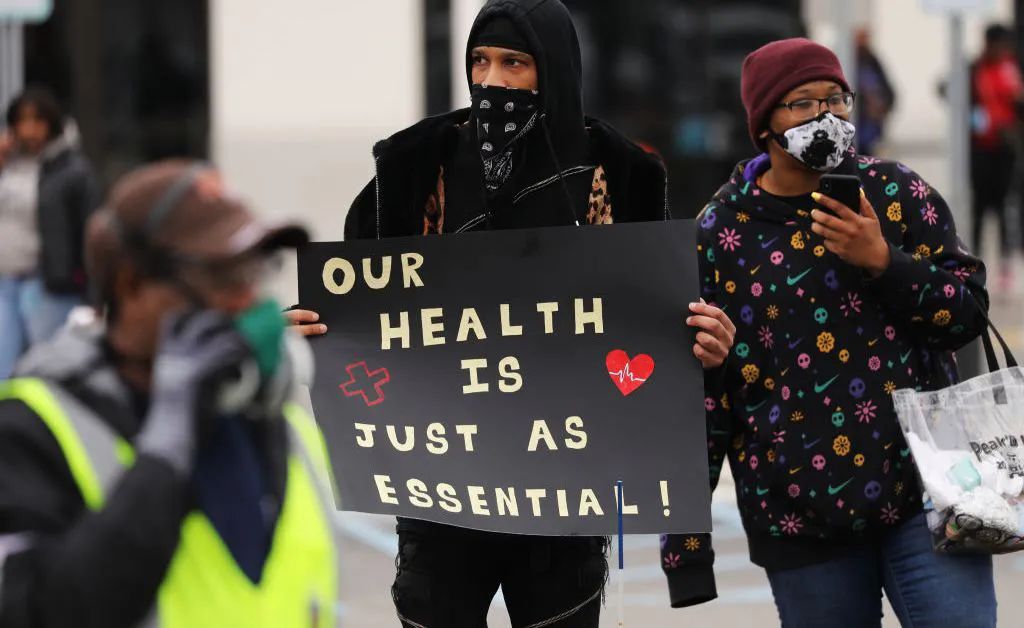
Author | Allisonson
Editor in charge | Zi
“Expulsion of the” whistle blower “is not a by-product of the macroeconomic environment, nor is it a product of the free market. This only proves that poisons are flowing in the company’s (Amazon) cultural blood vessels.”
On May 1, Tim Bray, vice president and senior engineer of the Amazon Cloud Computing Division, resigned in anger, giving up more than a million dollars in salary and unauthorized Amazon shares in protest of Amazon ’s expulsion of warehouse workers who participated in the strike (‘The Whistleblower’).
His blog revealing that “Amazon’s corporate culture is poisonous” immediately spread across the entire network.
Following the departure of Tim Bray, a warehouse worker infected with new coronary pneumonia was diagnosed and died today at Amazon ’s JFK8 warehouse on Steten Island, New York. This is the third death.
1
Amazing corporate culture is toxic?
Tim Bray published a long blog post called “Goodbye, Amazon” on the day of his departure, expressing his strong dissatisfaction with Amazon’s corporate culture.

Tim Bray blog screenshot
Amazon’s attitude towards employees involved in strikes and anti-epidemic activities during the epidemic, regarded them as “alternative sorting and packaging workers” poisonous”.
In Tim Bray ’s view, Amazon does not motivate employees generously. The success of a capitalist system is the root cause of its mistreatment of warehouse employees.
And he is unwilling to help him as a torturer and as a tiger.
“I can neither continue (for such a company) service, nor can I swallow the” poison “.”
Tim Bray, picture from the New York Times
In March of this year, workers at Amazon ’s warehouse (JFK8) in Staten Island in New York staged a strike protest. They called on Amazon to provide more protection for warehouse workers.
Terrell Worm, one of thousands of workers in the JFK8 warehouse, said in an interview with the media:
“When I work in the warehouse every day, I will be exposed to at least more than 2,000 different items. I need to pick up the products from the shelves and put them elsewhere, but the company has not provided me with any protection measures. Amazon always says ‘we are a family’. If the company really sees us as a family, they should protect our safety and keep us at home. “
After the media exposure of the Amazon Staten Island warehouse strike incident, Amazon promised to improve the working environment of workers and provide better protection for employees. However, one of the organizers of the event, Christian Smalls, a warehouse worker, was accused of “violating company isolation” by Amazon. Dismissal ”for reasons.
Amazon said that Christian Smalls had contact with a newly diagnosed employee before but did not comply with the company ’s isolation regulations and participated in the protest.
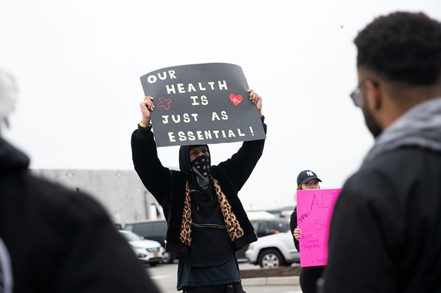
Christian Smalls, picture from Reuters
In order to help warehouse workers obtain employee benefits such as sick leave, wages for sick leave and childcare services, in April, Amazon ’s internal employee organization AECJ (Amazon Employees for Climate Justice) organized a petition and collaborated with Amazon ’s warehouses around the world. The workers held a video conference,
On April 10th, AECJ released these initiatives and activities in Amazon ’s internal employee mail system. The two leaders of the organization, Emily Cunningham and Maren Costa, who were engaged in UI / UX design, were fired that day.
The official reason given by Amazon is that the two of them “violated the employee ’s prohibition on asking other colleagues to donate and sign a petition.Company regulations “.
In addition, Amazon laid off employees who protested in Minnesota and Pennsylvania, and another employee of JFK8.
These dismissed employees have one thing in common. They have initiated and organized employee petitions and protests. The purpose of these activities includes calling on Amazon to provide more protection measures for warehouse workers and increasing the benefits for the bottom workers. Treatment etc.
In the end, these employees were expelled from Amazon one by one for publicly “working against the company”.
Although Amazon ’s dismissal of these three people seems to have “justifiable reasons,” in the vast majority of people ’s opinion, this is Amazon ’s discipline of the company, and the meaning of “killing chickens and monkeys” is also obvious. Employees of the company’s policy dissidents are reminded that if you toss again, your ending will be the same as these.
The New York Attorney General ’s Office believes that Amazon ’s warehouse has insufficient protection measures, and it is reasonable to believe that it violates New York State ’s Whistleblower Protection Act.
And this is not the first time Amazon has shown a fierce appearance to employees who “choose things.”
Last year, Amazon employees established AECJ. The organization hopes that Amazon can take on more responsibilities and play the role of a super enterprise when the current global climate is becoming more and more threatened.
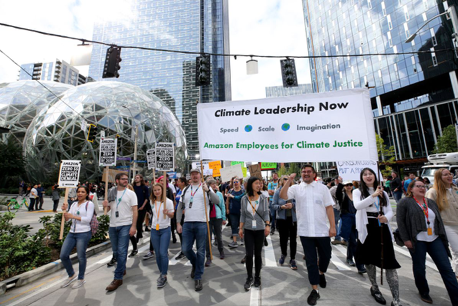
AECJ participated in the global climate parade last year, the picture comes from verge.com
At that time, AECJ wrote an open letter to Amazon ’s shareholders, calling on shareholders to take action. At that time, the open letter was signed and supported by 8,702 Amazon employees. Although this resolution won the majority of votes, it was not passed.
Four months later, another 3,000 Amazon employees participated in the global climate strike event. The day before the strike, Amazon finally announced a large-scale climate crisis solution.
But Amazon ’s decision was not influenced by these reform activists and employees. Instead, the leaders of the activities have been threatened with dismissal.
In the face of different voices in the company, the management could have taken some more proactive countermeasures to solve the problem, but Amazon chose the simplest and most rude way to deal with it-various threats based on “violation of company-related policies” Or dismiss rights defenders.
2
Contradictions between technology companies and gigs intensify
ExceptOutside of Amazon, fresh courier company Instacart suffered a similar strike.
The employees participating in the strike are not ordinary workers who have sound employee welfare and can work remotely during the epidemic. They are part-time economic workers who earn a minimum hourly salary or receive piece-rate money.
In terms of external publicity, these companies call the front-line workers who are responsible for packing in the warehouse, purchasing and shipping goods in the supermarket as “heroes”, but they question their employers:
Why did n’t the company take enough protective measures to protect the health of the “heroes” in the epidemic?
Why not increase the welfare of the “heroes”?
What does it mean for “heroes” to have a false name?
In the epidemic, gig workers who continue to work at the risk of being exposed to the virus hope to get more paid sick leave, but Amazon ’s paid sick leave is only applicable to those who test positive for the new coronavirus, or Employees who are forced to isolate themselves;
Amazon ’s warehouse workers hope that the company can temporarily close the warehouse for thorough cleaning after employees are diagnosed with the new crown virus;
The delivery staff of Instacart hope to get basic protective items such as sterilized paper towels and disposable hand sanitizer. They hope that Instacart can pay a hazard allowance of $ 5 per order and raise the tipping standard;
Coincidentally, today the California government formally sued Uber and Lyft, claiming that they violated California Labor Act A.B.5., erroneously classified drivers as odd jobs, and did not provide employees with the benefits such as medical insurance.

Image source: Justin Sullivan / Getty Images
The gig economy has created a new type of employment relationship. Platforms composed of various applications have replaced traditional corporate employers, and these platforms have become the connection between consumers and practitioners.
As the most well-known enterprises in the gig economy industry, Uber and Lyft have always insisted that the drivers who use their platforms to pick up jobs are independent contractors, not employees who should enjoy various welfare guarantees in the traditional sense of the law.
This method saves a lot of wage expenses for a large number of technology companies that hire odd jobs, and is also regarded as one of the key factors supporting its rapid development.
However, the outbreak of the epidemic has highlighted the vulnerability of the odd-workers.
Jaime Maldonado, a Lyft driver who lives in San FranciscoAccording to the introduction, before the outbreak, he carried about 100 passengers per week. By mid-March, this number had dropped to 50. Accordingly, his income had also been halved, and he could only get about $ 600 a week.
Richwine, an Uber driver in Ohio, said his current income is zero.
The income of shared drivers who rely on Uber and Lyft to support their families full-time is severely reduced, generally at least 50% + less than before the outbreak.
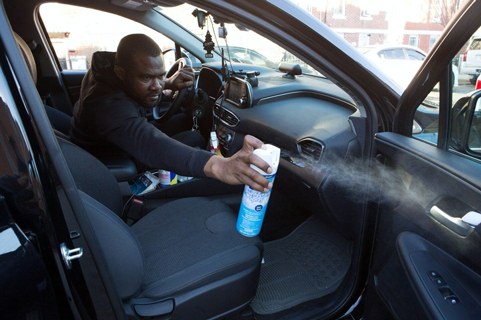
Adama Fofana, a Uber driver in New York, is disinfecting his vehicle
Instacart’s large number of orders rely on delivery staff all over the United States to complete, but Instacart does not regard the delivery person as a traditional employee, but regards each person as an “independent contractor.”
Not only do they not have paid sick leave, Instacart will not even equip basic protection items such as disinfectant wipes and disposable hand sanitizer until the employees strike.
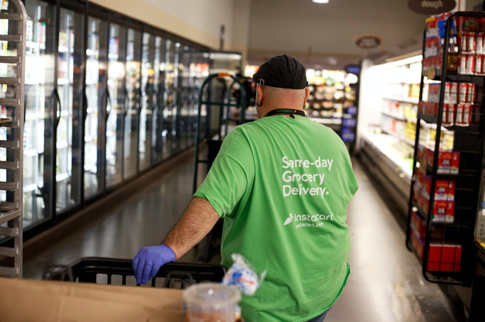
Instacart employees are purchasing in supermarkets
In the new crown epidemic, if the driver is picking up the guests and the delivery person is unfortunately infected with the virus while delivering food, who should bear the medical insurance?
But when the epidemic situation arrived, the persistent problems of the gig economy have also been magnified. “Who will be responsible for the gig economy” has become one of the most prominent contradictions.
In the epidemic, companies that are more prosperous in business do not provide more protection for first-line workers who may be infected with a high virus risk factor than gig companies with reduced income.
In the classic management science, “emphasis on employee interests and people-oriented” is the golden rule that excellent companies pursue, but it is not fully applicable in the gig economy.
Art Pulaski, Chief Financial Officer of the California Labor Union, said: “When giant companies such as Uber and Lyft refuse to comply with the law, we all have to pay the price. When Uber and Lyft do not pay“ lifesaving ”unemployment insurance for unemployed drivers, they When it comes to welfare, taxpayers pay a price to fatten company executives with a million-dollar income. “